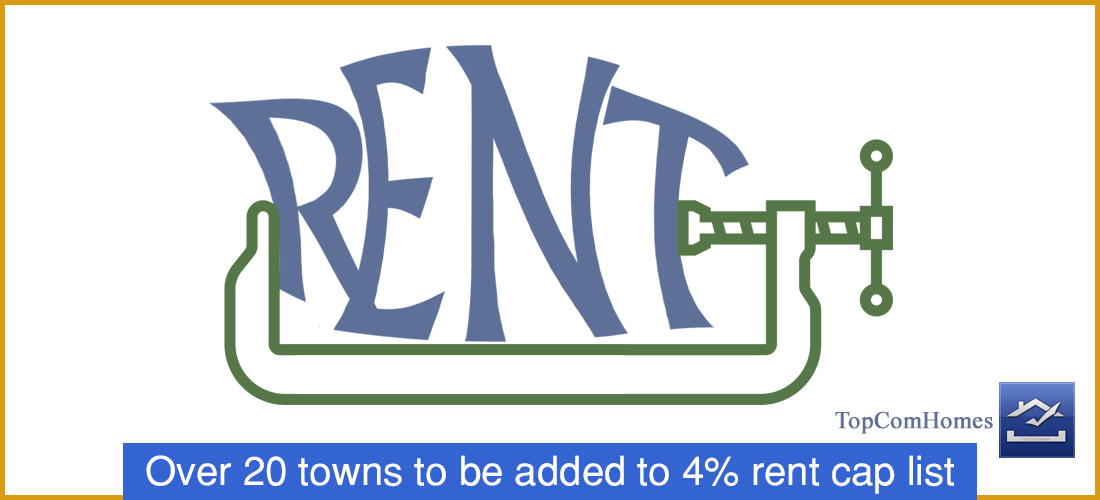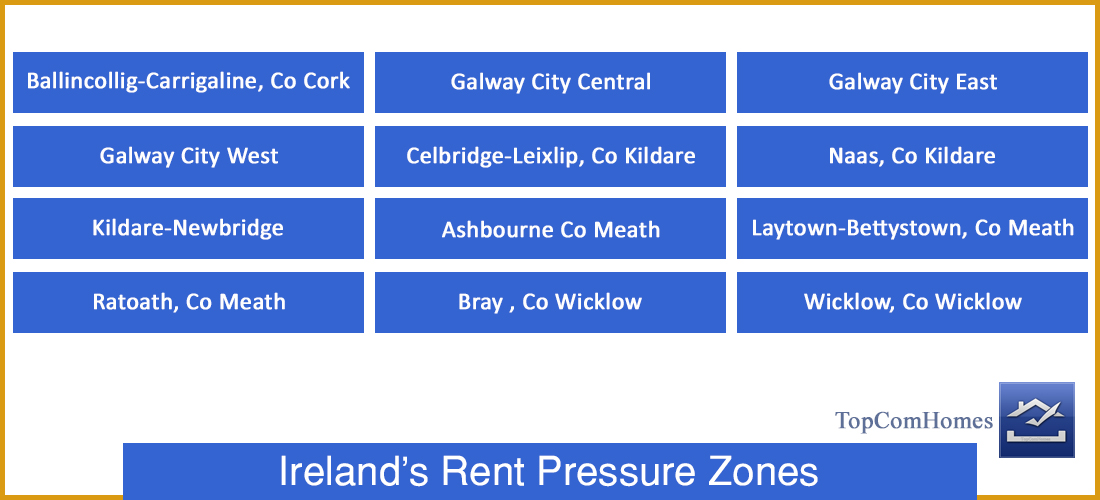
Helpful Information
Ireland's Rent Pressure Zones.
Ireland's Rent Pressure Zones.
Rent Predictability Measures were new provisions enacted under the Planning and Development (Housing) and Residential Tenancies Act 2016 (the “2016 Act”) that are intended to moderate the rise in rents in the parts of the country where rents are highest and rising and where households have greatest difficulties in finding accommodation they can afford.
In these areas, called Rent Pressure Zones (“RPZ”), rents will only be able to rise according to a prescribed formula by a maximum of 4% annually. The existing requirement that the rent set for a property must be in line with local market rents for similar properties and three examples of rents for comparable properties must be presented to demonstrate this, still applies.
The measure was applied immediately to Dublin and Cork city. It covers the 4 Dublin local authorities (Dublin City Council, South Dublin County Council, Dun Laoghaire/Rathdown County Council and Fingal County Council) and Cork City Council.
Minister Simon Coveney has announced the extension of Rent Pressure Zones beyond those introduced for Dublin and Cork cities in the following Local Electoral Areas (LEA’s) as Rent Pressure Zones with effect from Friday, 27 January 2017:
Ballincollig-Carrigaline, Co Cork 
Galway City Central
Galway City East
Galway City West
Celbridge-Leixlip, Co Kildare
Naas, Co Kildare
Kildare-Newbridge
Ashbourne Co Meath
Laytown-Bettystown, Co Meath
Ratoath, Co Meath
Bray , Co Wicklow
Wicklow, Co Wicklow
There are 26 towns included in these Local Electoral Areas including, Sallins, Rathagan, Slane, Julianstown, Duleek, Dunboyne, Dunshaughlin, Enniskerry, Douglas and Passage West.
If your home or property falls within one of these areas it is covered by the measure.
What makes an area a designated Rent Pressure Zones?
For an area to be designated a Rent Pressure Zone, rents in the area must be at a high level and they must be rising quickly, the criteria are:
The annual rate of rent inflation in the area must have been 7% or more in four of the last six quarters,
The average rent for tenancies registered with the Residential Tenancies Board in the previous quarter must be above the average national rent in the quarter( the National Indicative Rent in the RTB’s Rent Index Report)
Who decides what areas are Rent Pressure Zones?
Rents are closely monitored and the Housing Agency, following consultation with the Local Authority concerned, may propose an area to the Minister for consideration. The Minister will ask the Residential Tenancies Board, which collects and monitors the data on rents, to assess whether the criteria apply to the area. If they do, the RTB will confirm that to the Minister and the Minister will make the relevant order. The RTB will then publish the designation.
Are all rental properties covered?
Not all rental properties are covered by the 4% annual rental restriction. Properties that are new to the rental market and have not been let at any time in the previous two years and properties which have undergone a substantial change can be exempted from the measure.
A ‘substantial change’ must be a significant change to the dwelling resulting in increased market value of the tenancy. This would involve significant alterations or improvements which add to the letting value of the property.
If I want to raise the rent on my dwelling in a Rent Pressure Zone, what do I need to do?
Where a landlord is setting the rent in a Rent Pressure Zone the amount can not be greater than the amount determined by the below formula, the existing requirement that the rent set is not above the local market rents for similar properties still applies and three examples of rents for similar properties in the locality must be presented to demonstrate this.
R x (1 + 0.04 x t/m)
*please note that you should do your calculations working from right to left
R = The amount of rent last set under a tenancy for the dwelling (the current rent amount)
t = The number of months between the date the current rent came in to effect and the date the new rent amount will come in to effect.
m = you must enter 24 OR 12
Landlord has not reviewed the rent in previous 24 months:
For tenancies that are already in existence a review is only permitted 24 months after the tenancy came in to existence or 24 months from the date the rent was last set. In this instance m = 24.
For this initial rent review after the 24 month period as specified above a maximum rent increase of 4% will apply. (This amounts to 2% per annum applied pro-rata for the period since the rent was last increased).
Following on from this initial review after 24 months, a landlord is now entitled to review the rent every 12 months.
New tenancies from 24th December 2016:
Landlords of all new tenancies within a Rent Pressure Zone commencing on or after 24th December 2016 are entitled to review the rent annually. In this instance m = 12.
If rent reviews take place annually the permissible rent increase in each case will be 4%. If, for example, a landlord opts to review the rent after 18 months (instead of one year) the allowable increase will be 6% (4 % per annum pro-rata for 1 ½ years).
Additional Requirement for New Tenancies in Rent Pressure Zone
In the case of a new tenancy in a rent pressure zone, a landlord is required to furnish the tenant, in writing, with the following information at the commencement of the tenancy:
(i) The amount of rent that was last set under a tenancy for the dwelling;
(ii) The date the rent was last set under a tenancy for the dwelling;
(iii) A statement as to how the rent set under the tenancy of the dwelling has been calculated having regard to the rent pressure zone formula.
Supply
It’s envisaged the new system will not negatively impact either existing or new supply. To encourage additional investment into the market, the Minister had excluded new units and units vacant for over 2 years that will be put back into the market.
Rent Certainty Measures
Rent certainty measures will continue to apply until the next rent review is due to be carried out. Thereafter if the area is not in one of the rent pressure zone then the rent certainty measures will continue to exist, namely that the landlord cannot increase the rent greater than the market rent having given 90 days notice of the rent increase having sought three comparable properties advertised within the previous four week period
What do I do if I think I am being charged too much rent?
You should initially seek clarification from your landlord regarding the calculation of the rent. If this does not resolve the issue, you may contact the Residential Tenancies Board to seek further information. If you still think you are being charged more than you should in accordance with the law, then you may make a dispute application to the RTB.
More information about the rent pressure zones could be found in the following websites : housing.gov.ie & RTB.ie .
Source : RTB


Comments